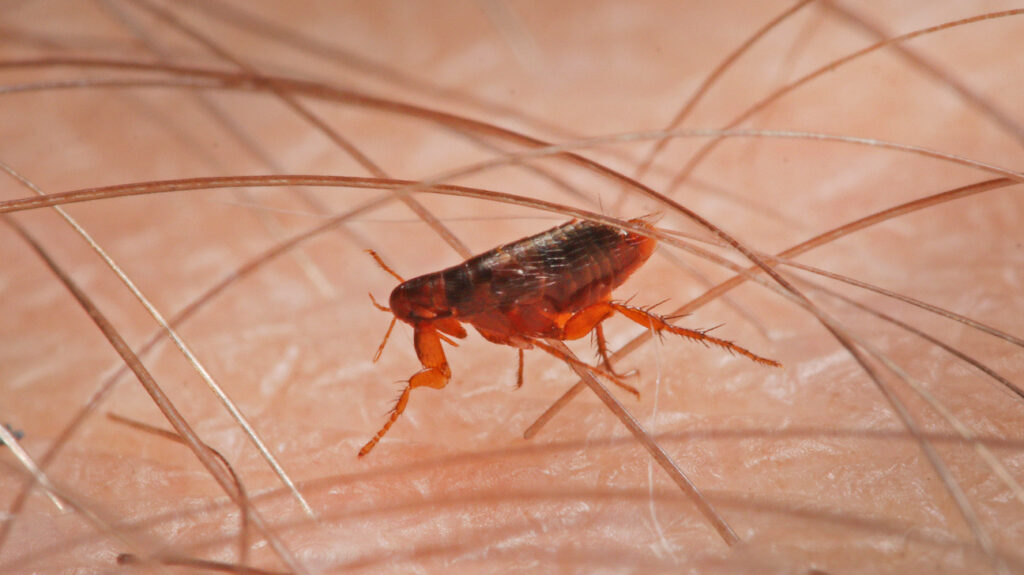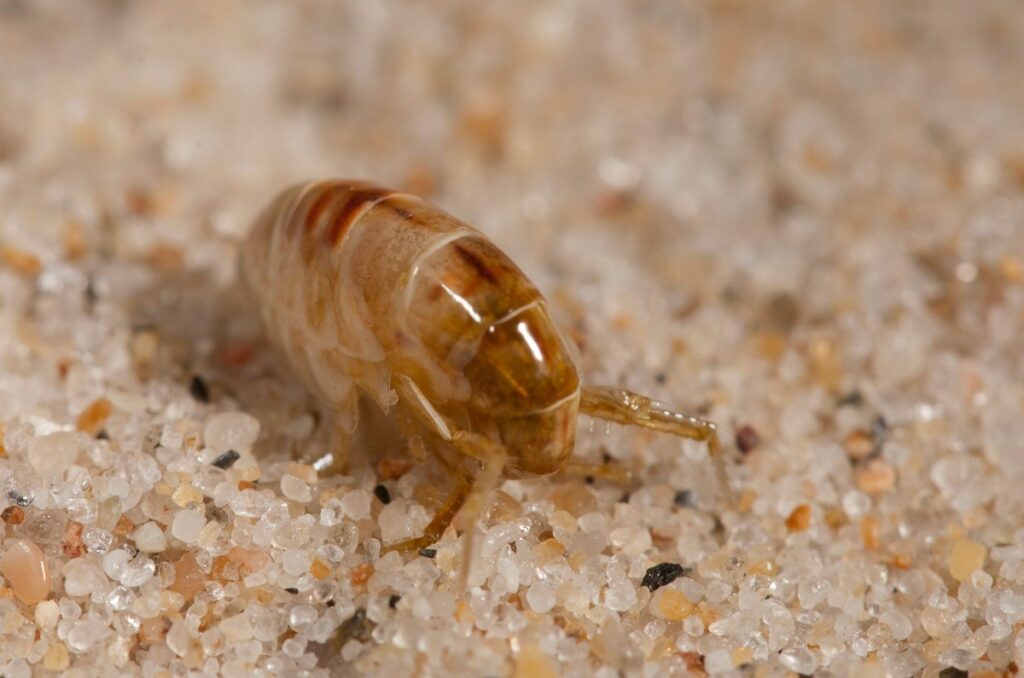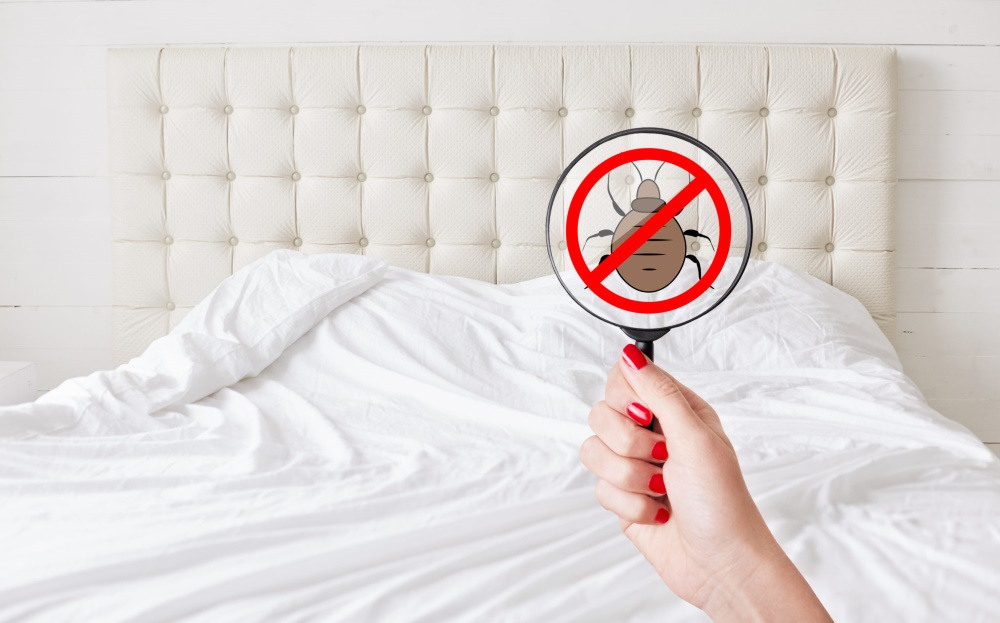

They can jump all they want, but fleas don’t make us happy. Their presence is often the beginning of long troubles. Stinging, invasive, bloodthirsty, and proliferating very quickly – fleas are a real ordeal.
They live on cats, dogs, and humans to survive. However, without finding a host, the adults die. That’s why to get rid of them permanently, one has to know more about them.
So, how long can fleas live without a host? In this article, we will tell you everything you need to know.
Fleas are tiny insects whose average size does not exceed a few millimeters. To fight them effectively, you need to know more about these ectoparasites.
An adult female flea lays about twenty eggs every day. These eggs give birth to larvae which turn into pupae. Inside the cocoon grows the nymph to become an adult flea eventually. In its cocoon, the flea can stay in the domestic environment for months before looking for a new host.
As adults, fleas feed exclusively on the blood of their hosts. Their prey is almost always mammals – and also humans. Some particular flea species have developed a preference for birds. Long before humans appeared on Earth, fleas were already thriving at the expense of the animals whose blood they sucked.
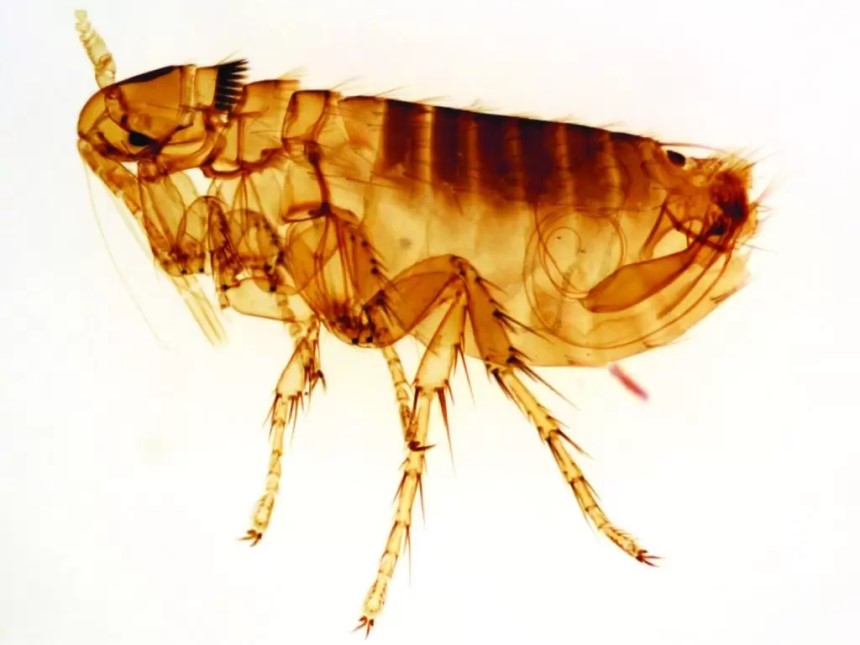
This would be equivalent to a man jumping to the top of the Eiffel Tower. This useful but energy-intensive ability allows the flea to jump on a host.
The adult flea takes its first blood meal on the pet. 24 to 48 hours later, the female flea lays eggs on the flea’s host (dog/cat). Then the eggs will fall to the ground after about two hours. Three to five days later, the eggs hatch and turn into larvae.
Each larva weaves a cocoon in which metamorphosis takes place. This leads to the adult stage in a few days to a month if animals are present in the environment. However, if the conditions are unfavorable, they can survive for three months in the environment.
Most stages of flea development are found where the animal stays the most, e.g., in the basket or on the sofa. Even though the eggs are laid on the animal, they eventually slip off the coat and continue to develop in the environment.
After about a week, larvae without eyes and legs hatch from the eggs. They feed mainly on decaying organic matter on the ground. Since the larvae can wrap themselves around textile fibers, it isn’t easy to remove them by vacuuming.
The larvae grow not far from the host animal. It molts three times to reach the last larval stage. Then, it weaves a cocoon where the pupa is formed, turning into a proper flea.
The cycle can last from a few weeks to several months in natural conditions. Very resistant, the nymphs are difficult to eliminate.
During their existence, which generally lasts three months, adult female fleas lay about 40 eggs a day on their host. To be able to lay eggs, they must first feed on blood.
They suck their host several times daily (4 to 8x) for only a few minutes. The eggs fall from the host’s coat and are scattered around. This reproduction produces potential offspring of hundreds or even thousands of parasites.
Females are not the only blood suckers in fleas. Males are also fond of vampirism! Females especially need the solid components that provide energy (globules) to enhance them during spawning.
While sucking blood, they directly reject the liquid components of blood (serum) through their intestine. These “traces of blood” visible in the coat as dark red debris indicate a proven infestation. To obtain the proof, it is necessary to use a damp paper towel sheet: fleas’ droppings form reddish streaks in contact with humidity.
In the adult stage, the flea lives permanently in the coat of dogs and cats. It bites about 10 times a day and ingests up to 15 times its weight in blood.
Once the female lays the eggs, they fall to the ground in places frequented by the animals (parquet slots, carpet, cushions, etc.). These eggs hatch to give mobile larvae, which, unlike adults, prefer to hide in damp and dark places (carpets). This is why fleas on your pet are only the visible part of the problem. Riding the fleas without the eggs does nothing to the infestation. Five fleas on an animal can produce hundreds of fleas (eggs, larvae, cocoons) in your home.
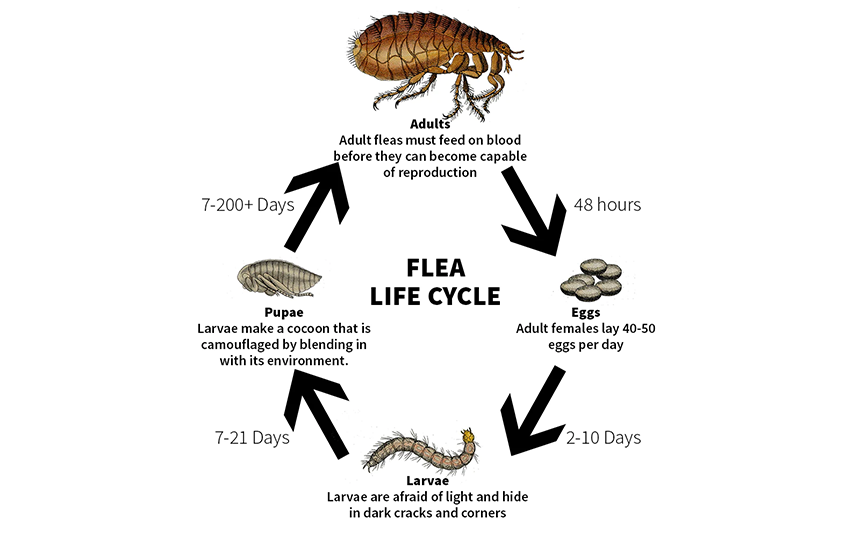 What Types of Fleas Are There?
What Types of Fleas Are There?Fleas come from the order Siphonaptera. They have existed since primitive times and have even parasitized certain dinosaurs! Suffice to say that fleas are not a new scourge, but they have been bothering people and animals for centuries. They have been in existence for 150 million years during the Jurassic period, when they also sucked on the blood of dinosaurs. There are more than 2400 species of fleas around the world.
The most common flea species encountered are the cat flea, dog flea, hen flea, hedgehog flea, and human flea. Find out a little more about the different species of Siphonaptera.
The cat flea, from its scientific name Ctenocephalides felis, is also called floor flea. This last name was given to them because they lodge in the parquet while waiting to find their next host. The cat flea does not only infest cats. Indeed, it is a ubiquitous flea species often found on most pets, humans, or livestock. This is the kind of flea found in 9 out of 10 or 90% of affected mammals. Their adult size is estimated at 3 mm.
The dog flea, from its Latin name Ctenocephalides canis, is a species of flea that is encountered much less often than the cat flea. Dog fleas most often attack canids and nest in their baskets, blankets, or even in gardens. However, they can also attack humans or other domestic animals. Their adult size varies from 1 to 4 mm.
The human flea, from its scientific name Pulex irritans, is a flea found in humans but also on pets. The big difference with other species of fleas is that this flea first attacks the skin of humans, then secondarily its dogs or cats. However, their presence is becoming increasingly rare, and humans are now much more infested with cat fleas and dog fleas. Their adult size varies from 1 to 3 mm.
From its scientific name Ceratophyllus gallinae, the chicken flea is often mistakenly confused with the bird flea, from its Latin name Dasypsyllus gallinulae. The chicken flea is found in hen houses as soon as they can find some poultry. Bird fleas can also affect poultry since they attack all kinds of birds. Females and males are very productive. This type of flea, therefore, proliferates very quickly, and their number can be difficult to control after several days of infestation.
The hedgehog flea, also called Archeopsylla erinace, mainly infests the hedgehog. Hedgehog fleas often swarm in numbers on the body of hedgehogs. They can, however, be brought into the house by dogs and cats when they come into contact with them in the gardens through their coats. The fleas then cling to the mammals using their powerful legs. Their adult size varies from 2 to 3.5 mm.
You will also find other species of fleas that infest other mammals such as rodents, rats, moles, or rabbits.
The quick answer is a few days to two weeks maximum in an adult flea. But that’s not true for pre-adult stages of development.
The above is not true for flea eggs and larvae. They do not need a host and can reach high populations. The female flea can produce at least 50 eggs per day, which can remain viable in the environment for several days. But they probably never will if they don’t hatch in 10 days.
Once the eggs hatch, they become flea larvae. The larvae do not need a host to survive – they spend much of their time in a “cocoon” stage, during which they mature into adult fleas.
Flea pupae don’t necessarily need to stay on the host to survive or hatch. Instead, they can be found in damp and shaded areas under bushes, leaves, and trees. Developing fleas can live in these cocoons for up to 5 months without food or light.
Fleas usually don’t survive more than 100 days, even if they live on a host (the animal they feed). However, they have no food source without a host and can die in 14 days.
Although fleas are most often characterized by the name of their preferred host (dog flea, cat flea, human flea, rat flea, chicken flea, etc.), they do not have specificity on hosts. Therefore, they can jump from animal to human. The rat flea is a notorious example of this transmission. It wouldn’t hesitate to take up residence on the man who serves as its substitute if the animal it infests dies. This can thus cause a black plague epidemic, typical of what happened during the plague epizootic.
The most favorable season for infestations is from early August to early October. Hence the importance of being extra vigilant at this time of year. After each outing of your pet, inspect their hair well and do not hesitate to pass a flea comb. Then use the appropriate flea treatment if needed.
Measuring only 1 to 3.5 mm, the fleas are not usually visible at first glance, but their brown color can help you spot them.
The problem with fleas is that the eggs and the pupae are insensitive to insecticides. So, on returning from vacation, we treat and kill the adults and the larvae, but the eggs develop into larvae, and the pupae release new biting fleas and will lay eggs again! So, a single treatment is rarely enough, and it always seems that the products do not work!
However, below are tips for treating flea infestation:
Before reoccupying the premises, complete the treatment with an anti-flea insecticide in all corners and places where fleas pass: the animal’s basket, armchairs, carpets, bedding, floorboards, and doormats. This will kill new larvae and adults from dormant pupae.
Adult fleas find refuge in dogs and cats to feed and reproduce. But their eggs scatter on the ground to continue their cycle. So protecting your pets also involves treating their environment. However, once an adult flea is deprived of its host, it starves to death. It will usually die in two to 14 days.
Now that you know the answer to the theme question of the article, “how long can fleas live without a host,” you know what to do.
Our advice is that you plan to do two complete treatments (generally 8 days after the first). However, be aware that dormant pupae can generate a new infestation depending on their number. Therefore, it will be necessary to repeat the operation the same way until the stock of pupae is exhausted.

